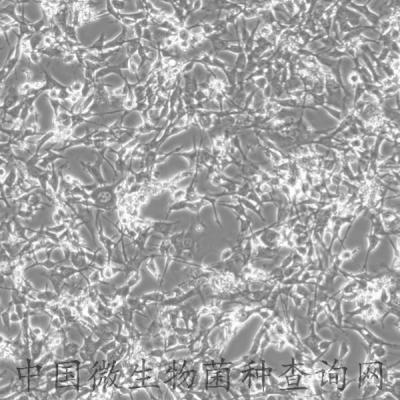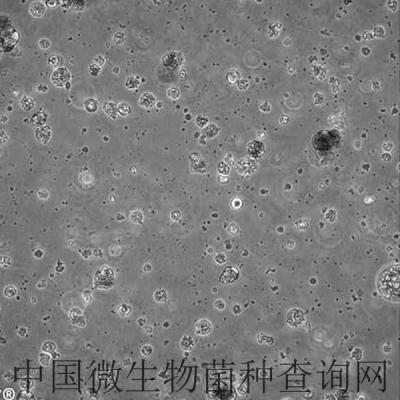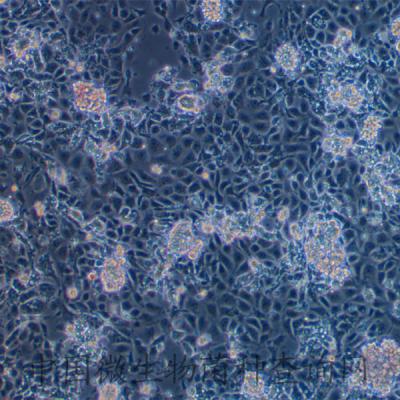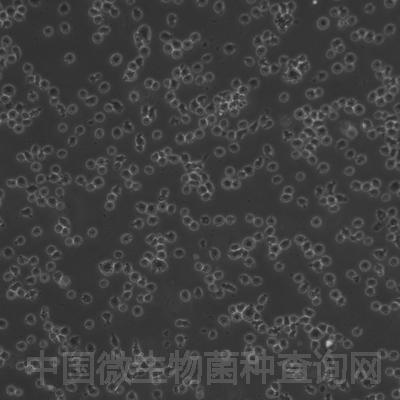
EpH4-Ev
(ATCC® CRL-3063™)統(tǒng)一編號
Organism Mus musculus, mouse
Tissue breast epithelium (mammary gland)
Cell Type epithelial cell
Product Format 提供形式 frozen
Morphology epithelial-like
Culture Properties adherent
Biosafety Level 生物安全等級 2 [Cells contain CMV and SV40 viral DNA sequences]
Biosafety classification is based on U.S. Public Health Service Guidelines, it is the responsibility of the customer to ensure that their facilities comply with biosafety regulations for their own country.
Gender female
Applications
This cell line can be used to study normal epithelial cell function and cell transformation.
Storage Conditions liquid nitrogen vapor phase
Images CRL-3063 Micrograph
Derivation EpH4-Ev was produced by transfecting parental EpH4, a mouse mammary epithelial cell line, with an empty expression vector carrying a puromycin resistance gene. Stable clones were isolated by selection in medium containing 1.2 µg/mL puromycin.
Genes Expressed puromycin resistance gene, expressed
Tumorigenic No
Comments
EpH4-Ev was produced by transfecting parental EpH4, an immortalized mouse mammary epithelial cell line, with an empty expression vector carrying a puromycin resistance gene. Stable clones were isolated by selection in medium containing 1.2 mg/mL puromycin.
The EpH4 cell line presents an attractive model in which to study transformation because the cells exhibit morphological and functional characteristics typical of normal mammary epithelial cells. This cell line has been used to generate constitutively activated MEK1 transformed cell line B-MEKDD 116 (ATCC CRL-3069). There are three additional related cell lines: EpH 1424 (ATCC CRL-3071), EpH4 1424.1 (ATCC CRL-3209), EpH4 1424.2 (ATCC CRL-3210).
Complete Growth Medium The base medium for this cell line is ATCC-formulated DMEM Catalog No. 30-2002. To make the complete growth medium, add the following components to the base medium:
10% Bovine Calf Serum
1.2 mcg/mL Puromycin
Subculturing Volumes used in this protocol are for 75 cm2 flasks; proportionally reduce or increase amount of dissociation medium for culture vessels of other sizes.
Remove and discard culture medium.
Briefly rinse the cell layer with Ca++/Mg++ free Dulbecco's phosphate-buffered saline (D-PBS) or 0.25% (w/v) Trypsin - 0.53 mM EDTA solution to remove all traces of serum which contains trypsin inhibitor.
Add 1.0 to 2.0 mL of Trypsin-EDTA solution to flask and observe cells under an inverted microscope until cell layer is dispersed (usually within 5 to 15 minutes).
Note: To avoid clumping do not agitate the cells by hitting or shaking the flask while waiting for the cells to detach. Cells that are difficult to detach may be placed at 37°C to facilitate dispersal.
Add 6.0 to 8.0 mL of complete growth medium and aspirate cells by gently pipetting.
Add appropriate aliquots of the cell suspension to new culture vessels. An inoculum of 4 x 103 to 8 x 103 viable cells/cm2 is recommended.
Incubate cultures at 37°C. Subculture when the cell concentration is between 8 x 104 to 1.5 x 105 cells/cm2.
Subcultivation ratio: A subcultivation ratio of 1:6 to 1:15 is recommended.
Medium renewal: Every 2 to 3 days
Cryopreservation Freeze medium: complete growth medium supplemented with an additional 10% bovine calf serum and 10% DMSO
Storage temperature: liquid nitrogen vapor phase
Culture Conditions Temperature: 37°C
Atmosphere: air, 95%; carbon dioxide (CO2), 5%
Name of Depositor P Leder
References 參考文獻(xiàn)
Fantin VR, et al. A novel mitochondriotoxic small molecule that selectively inhibits tumor cell growth. Cancer Cell 2(1): 29-42, 2002 PubMed: 12150823





